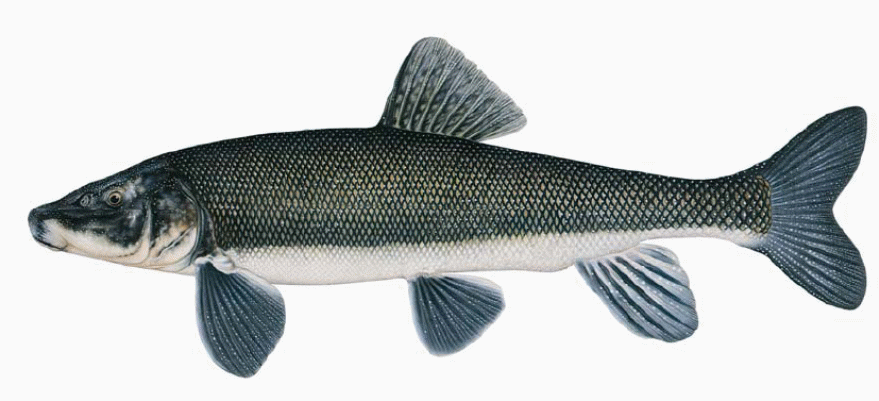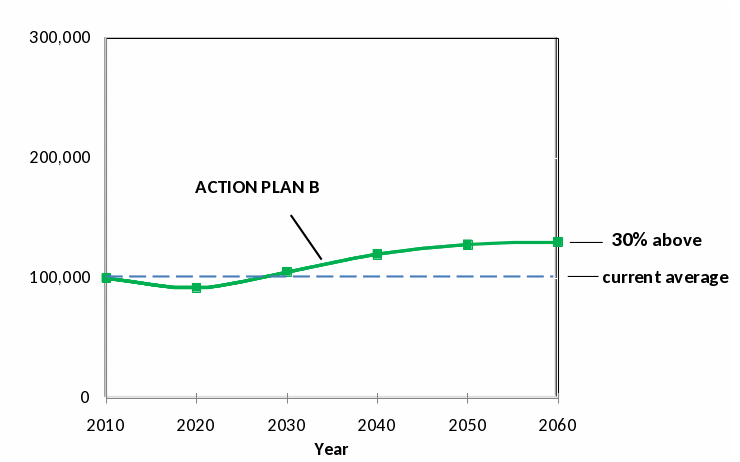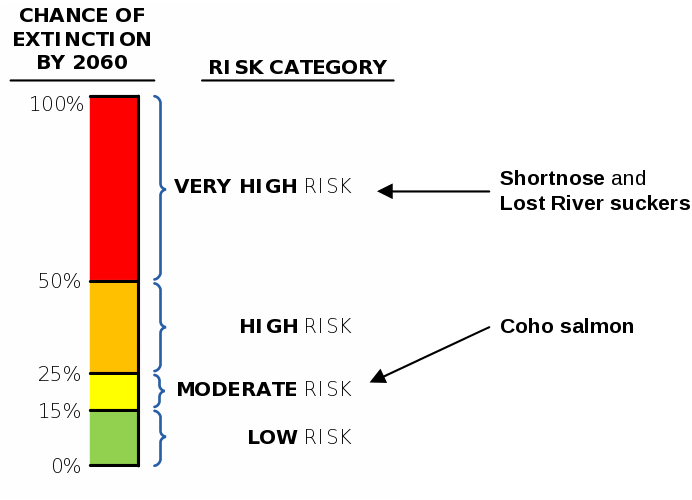Klamath Nonuse Valuation Survey
Klamath Non-use Valuation Survey
29 page Survey Instrument 070811 for ICR
90% Sample reminder postcard and second mailing respondents
OMB: 1090-0010
Restoring a U.S. River Basin: What Is Your Opinion?
Across the United States, many river systems are under stress from population growth, pollution, and competing demands for water. These stressors often harm the rivers’ fish and wildlife populations, as well as the people who value these river resources. Addressing these problems is an important local and national issue, but sometimes the solutions require big changes that can be costly.
This survey focuses on one river system in particular: the Klamath River Basin. The federal government is considering different plans for restoring this river basin and its fish populations. These plans would improve how water in the river is managed, but they would also cost U.S. households more money. Understanding the views of households like yours will help the government choose the best option.
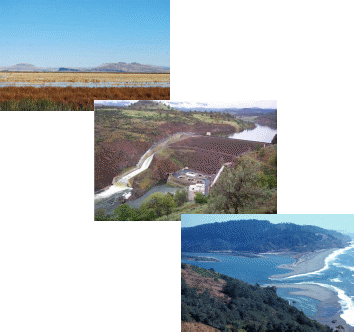
Upper
Klamath Basin (Oregon)
Iron Gate Dam on the
Klamath
River
Klamath River Estuary at the
Pacific
Ocean (California)
Your participation in this survey is voluntary. The reports prepared for this study will summarize findings across the sample and will not associate responses with a specific individual. We will not provide information that identifies you to anyone outside the study team, except as required by law. Your responses will be stored separately from your name and address, and when analysis of the questionnaire is completed, all name and address files will be destroyed.
A Federal agency may not conduct or sponsor, and a person is not required to respond to, a collection of information unless it displays a currently valid OMB control number.
Burden estimate statement: Public reporting for this form is estimated to average 30 minutes per response. Direct comments regarding the burden estimate or any other aspect of this form to:
Ben Simon, MS3530-MIB, 1849 C Street N.W., Washington, DC 20240 or [email protected].
OMB Control #1090-0010
Expiration Date: 12/31/2013
Cover photos courtesy of the U.S. Fish and Wildlife Service (FWS)
Page 8 illustrations by Joseph R. Tomelleri (Lost River sucker and shortnose sucker) and Timothy Knepp (coho salmon) courtesy of FWS
Page 10 photos: © Steven Holt/stockpix.com
About the Survey
In this survey, we will first describe the Klamath River Basin and the problems it is facing. We will then describe possible plans for changing (or not changing) how the Klamath River Basin is managed. We will describe how these plans could affect the basin and potentially your household. You will be asked how you would vote on the different plans. Finally, we will ask for your opinions on some of the topics covered in the survey and some information about your household.
Why we need you to fill out this survey
If one of these plans goes forward, the federal government and the states of California and Oregon will be involved in restoring the Klamath River Basin and its fish populations.
The Klamath River Basin is one of the 50 largest river basins in the United States.
As with many rivers, the water of the Klamath River Basin is used by many people for many different activities. Hard choices must be made about how to use the water.
The Klamath River Basin is home to farms, fisheries (commercial, recreational, and tribal), dams for hydroelectric power, and endangered fish species. Its rivers, lakes, reservoirs, and wildlife refuges also support many different kinds of recreation.
In today’s economic times, resources are limited. Federal, state, and local governments face difficult decisions about how to best manage, protect, and restore rivers. The information collected from this survey will help these decision makers know what you would like to see happen. This is your chance to provide input on this important decision.
General Instructions
If possible, use a pencil or dark ink pen to complete the survey.
Completely black out in the box beside your answer choice.
INCORRECT CORRECT
If you make an error, erase it cleanly and then mark the box beside your correct answer choice. If you are using a pen, mark through the incorrect response and mark the correct one normally.
Do not make any stray marks.
Introduction to the Klamath River Basin
A river basin is the area of land where water drains into a specific river. The Klamath River Basin is shown on the map included with this survey.
Geography
The basin starts in the mountains of southern Oregon. The streams flow into Upper Klamath Lake, the largest natural lake in Oregon.
The Klamath River flows from the lake, through Oregon and northern California, and into the Pacific Ocean.
The basin occupies over 10 million acres. It is twice the size of Massachusetts.
People
About 120,000 people live in the basin. Klamath Falls, Oregon, is the largest city, with a population of roughly 20,000.
The basin is home to about 16,000 members of Indian tribes, including the Klamath Tribes in Oregon and the Yurok, Karuk, Hoopa Valley, Quartz Valley, and Resighini tribes in California.
Fish and Other Wildlife
The basin contains over 80 fish species, including many different types of salmon, trout, and suckers. Six National Wildlife Refuges in the basin provide stopover habitat for over 1 million migrating birds each year.
Before you started this survey, had you ever heard of the Klamath River Basin?
Yes
No
I don’t know
Have you ever visited the Klamath River Basin?
Yes
No
I don’t know
Human Uses of the Klamath River Basin Water
People use the water in the basin in many ways. Like other big rivers, it is difficult to balance how much water should go to each different activity. The following are some of the main uses:
Commercial Fishing. The Klamath River is an important source of salmon for commercial fishermen in both the river and the Pacific Ocean. For most of the twentieth century, the Klamath River has been the third largest producer of salmon on the U.S. West Coast.
Farmland Irrigation. Since 1905, the U.S. Bureau of Reclamation’s Klamath Irrigation Project has provided water for farms in the basin. It currently supplies water to 190,000 acres of farmland. Another 310,000 acres of farmland are irrigated with water that does not come from the Klamath Irrigation Project.
Hydroelectric Power. From 1909 to 1962, several dams were built on the Klamath River near the Oregon-California border. They are operated by the power company PacifiCorp (also known as Pacific Power). Together, these dams can produce enough electricity to power about 70,000 homes.
Recreation and Tourism. The basin supports a wide range of water-based recreation activities, including fishing, boating, and swimming. It contains blue ribbon trout streams, highly rated whitewater rapids for rafting, a well-regarded reservoir fishery for yellow perch, and birdwatching and waterfowl hunting opportunities. Salmon from the basin also support recreational fishing in the Pacific Ocean.
Tribal Cultural Practices. For thousands of years, several Indian tribes have lived in the basin. Some of these tribes, including the Klamath, Yurok, Karuk, and Hoopa, have relied on the river’s salmon and other fish for food, for cultural and ceremonial activities, and for their economic well-being.
People use rivers for many different purposes. We are interested in how you use rivers. From the list below, fill in the boxes next to all the ways that you use rivers in your area.
Recreational boating or rafting
Transportation
Swimming
Near-shore recreation (such as hiking, picnicking, or bird watching)
Recreational fishing
Commercial fishing
Irrigating farmland
Drinking water
Spiritual or ceremonial purposes
My electric power comes from a hydroelectric-power dam
Other: ______________________________
None of the above
Declining Fish Populations in the Klamath River Basin
Restoring wild fish populations in the Klamath River Basin is one of the main goals of the plans being considered by the government. This page and the next page describe problems faced by different fish in the basin.
Chinook salmon and steelhead trout are two important fish found in the basin. They spend some of their lives in the Pacific Ocean, but they return to rivers and streams to spawn.
Their numbers have declined significantly since the early 1900s. At one time, between 600,000 and 1 million wild fish returned to the basin each year. Now, only 100,000 to 200,000 fish return and many of these are bred in a hatchery rather than in the wild.
The reasons for declining fish populations include the following (not in order of importance):
Dams on the Klamath River. Before the dams were built, the fish migrated into streams in both the pink and blue areas shown on the map on the next page. Today they migrate only into the pink area. They are blocked from the blue area by Iron Gate Dam and the other hydroelectric dams shown on the map.
Water Use for Farm Irrigation. The use of water for crops, especially around Upper Klamath Lake, has reduced the amount of water that remains for fish downstream.
Water Quality. Algae that grow in the warm waters of Upper Klamath Lake in the summer can harm or kill fish. Warm water in the reservoirs can harm salmon that return to the river to spawn in the fall. Some human activities in the basin, such as logging, farming, mining, and road building also affect water quality. Despite efforts to better manage these uses, water quality is still a problem for fish.
Overfishing. In the past, poor management of commercial ocean and river fishing in the Klamath area contributed to the decline in fish numbers. Currently, fisheries are better managed to help protect weak fish populations.
Although past and current efforts to improve conditions by governments, tribes, communities, and landowners have been helpful, more is needed to significantly increase wild fish populations in the basin.
Please rate how much you agree or disagree with the following statement.
I am concerned about declines in the number of Chinook salmon and steelhead trout that return to the Klamath River each year.
Strongly agree
Agree
Disagree
Strongly disagree
No opinion
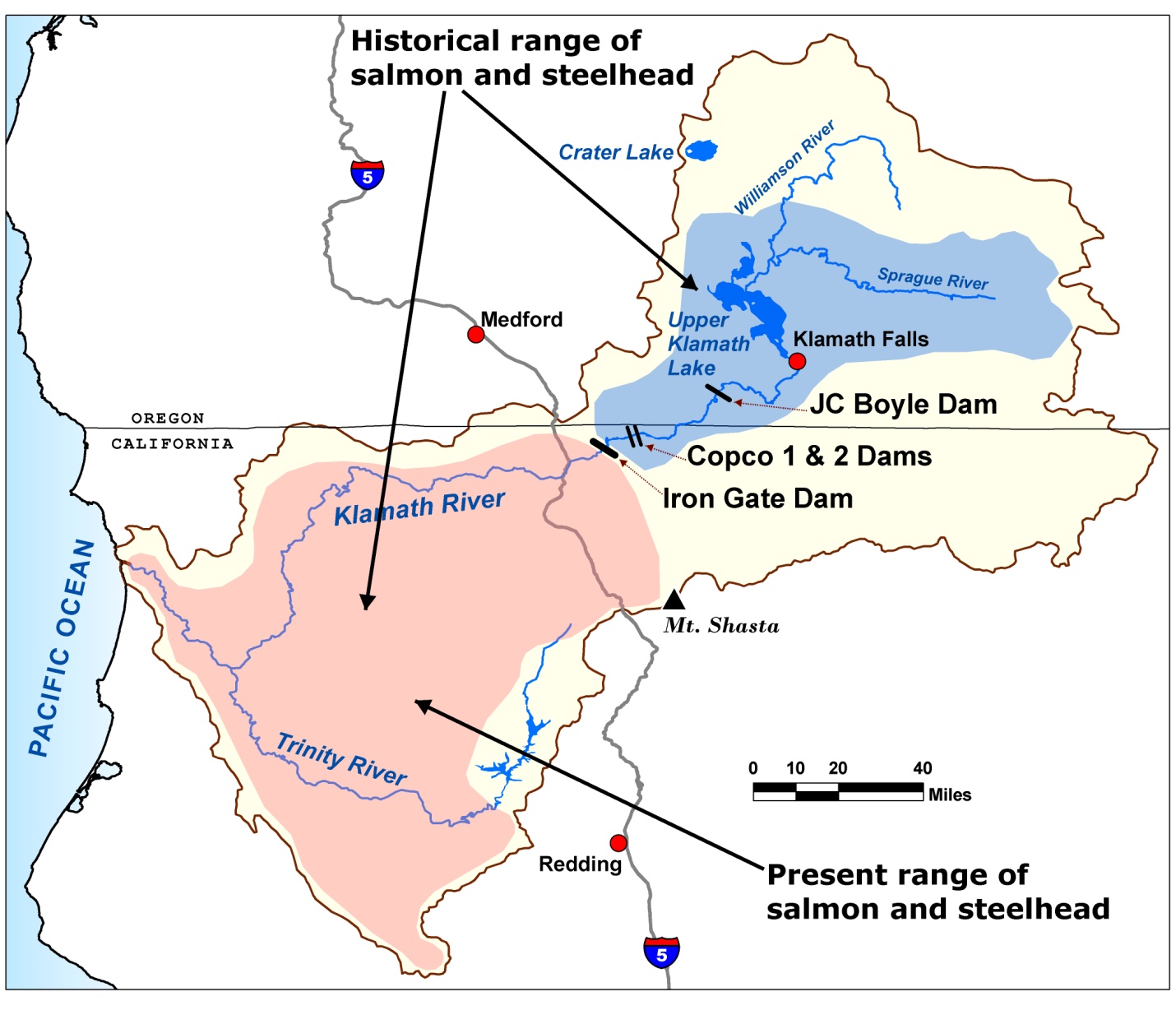
Historical vs. Present Range of Returning Salmon and Steelhead Trout
Threatened and Endangered Fish in the Klamath River Basin
Some fish in the basin are at risk of becoming extinct because of water and habitat problems.
Three species have been listed as either endangered (very high risk) or threatened (high risk) under the U.S. Endangered Species Act. They are described in the table below.
Species Name—Status |
Species Description |
Main Threats |
|
The shortnose sucker and Lost River sucker are found only in the areas around Upper Klamath Lake. For thousands of years, the Klamath Tribes used them as a major source of food. They were once plentiful enough to support commercial fishing, but now their numbers are greatly reduced. |
|
Shortnose Sucker (Endangered) |
||
Lost River Sucker (Endangered) |
||
Coho Salmon (Threatened) |
The Klamath coho salmon is part of a distinct coho salmon population that lives only in the Klamath River Basin and a few nearby rivers in Southern Oregon and Northern California. They were once plentiful in the basin, but now more are born in hatcheries than in the wild. |
|
Other species that are becoming rare in the basin include the Pacific lamprey (an eel-like fish) and the green sturgeon (a very large and prehistoric-looking fish). Both were once common in the basin and were an important food source for several tribes.
Please rate how much you agree or disagree with the following statement.
I am concerned about the shortnose and Lost River suckers that are at very high risk of extinction.
Strongly agree
Agree
Disagree
Strongly disagree
No opinion
Please rate how much you agree or disagree with the following statement.
I am concerned about the Klamath coho salmon that are at high risk of extinction.
Strongly agree
Agree
Disagree
Strongly disagree
No opinion
Resolving Conflicts over Water, Fish, and Dams in the Basin
The Klamath River Basin is important for many groups, but there is not always enough water for everyone, especially in drought years. Competing demands for water have been a source of conflict in the basin, especially in the early 2000s.
2001 was a very dry year. With not enough water for both farms and endangered fish, 85% of the farmland supported by the Klamath Irrigation Project faced severe water cuts. Many millions of dollars in federal aid were spent to help the farm families and communities affected by crop losses.
Drought in Klamath Basin
2002 was another dry year. This time more water was allowed for irrigation, but in late summer, over 33,000 salmon suddenly died in the Klamath River. Low water flows in the river were one of the main reasons.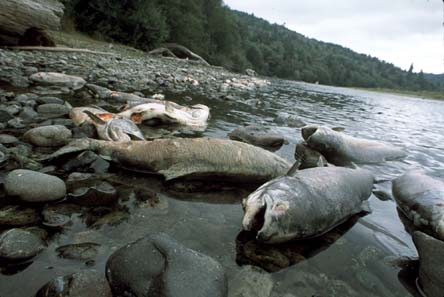
Fish Kill on Klamath River
In 2006, commercial salmon harvests in ocean waters off of California and Oregon were cut by 90%. The main reason was a lack of fish from the Klamath River, due in part to dams and low water flows. Many millions of dollars in federal aid were spent to help the fishing families and communities affected by the economic hardship.
The conflicts created by these events drew national attention and greatly increased public concern about the river basin. Many different parties filed lawsuits. At the same time, four dams on the river needed government relicensing. It was estimated that changing the dams to allow fish to go around them would be more expensive than removing the dams and replacing their electric power.
After several years of court battles and conflict, very little progress had been made toward a solution. So the parties involved tried a different approach. Over 35 different groups agreed to work together to reach a compromise solution.
In February 2010, most of these parties reached an agreement, including the states of Oregon and California, tribes, counties, and farming, fishing, and environmental organizations. A few parties, including one tribe and one county, have not signed the agreement.
Before taking this survey, had you read or heard about the conflicts over water in the Klamath River Basin?
Yes
No
I don’t know
The Main Parts of the Agreement
The agreement defines the following three key steps for moving forward. Now the federal government must decide whether and how to implement these steps.1. Dam Removal
I
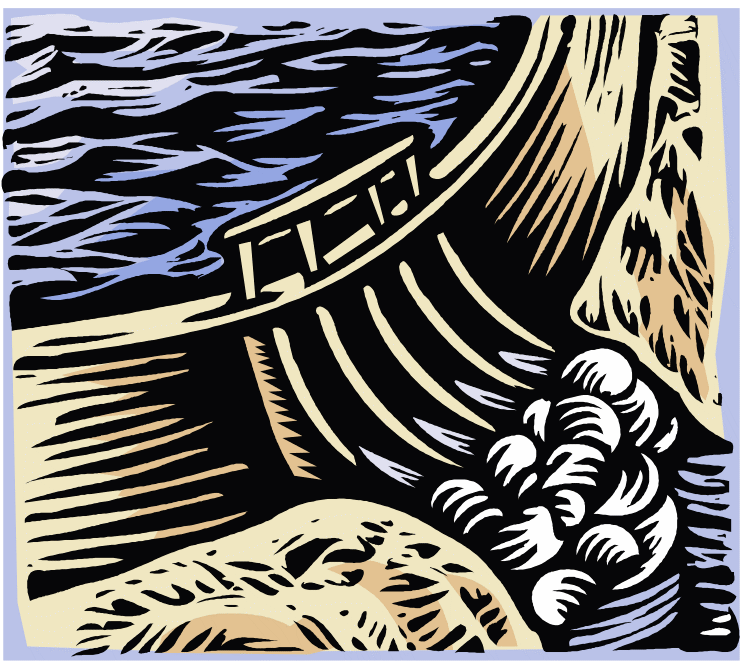 n
2020, after several years of detailed planning, the four large
hydroelectric dams would
be removed from the Klamath River.
n
2020, after several years of detailed planning, the four large
hydroelectric dams would
be removed from the Klamath River.
The reservoirs created by these dams (each 4 to 7 miles long) would no longer exist after 2020. The original river channel and the areas that were underwater would gradually return to their previous conditions.
2. Fish Restoration
D
 am
removal alone is not enough to restore fish populations. Fish
habitat also needs to be further improved. So, the agreement sets up
a process for choosing projects to restore fish habitats in the
basin. These projects would, for example, restore and protect fish
spawning areas, improve water quality, remove barriers from the
river, and prevent fish from swimming into irrigation channels.
am
removal alone is not enough to restore fish populations. Fish
habitat also needs to be further improved. So, the agreement sets up
a process for choosing projects to restore fish habitats in the
basin. These projects would, for example, restore and protect fish
spawning areas, improve water quality, remove barriers from the
river, and prevent fish from swimming into irrigation channels.
3. Water Sharing Agreement
T
 he
agreement sets a permanent and annual schedule for water deliveries
to farms and for water releases to the river.
he
agreement sets a permanent and annual schedule for water deliveries
to farms and for water releases to the river.By removing uncertainty about water sharing, the agreement helps farmers, fish, and the people who rely on fish for commercial, recreational, subsistence, and ceremonial uses.
Before taking this survey, had you read or heard about this agreement for restoring the Klamath River Basin?
Yes
No
I don’t know
How Would the Agreement’s Activities Be Paid For?
For the agreement to move forward, money would need to come from three main sources:
higher electricity bills for PacifiCorp customers in Oregon and California,
Oregon and California for dam removal, and
the federal government for fish habitat improvement.
Under this agreement, Oregon and California residents and businesses would on, average, pay more than residents from other states. But households across the country would contribute to these activities through their federal taxes.
Do you agree or disagree that Oregon and California residents should, on average, pay more than residents of other states for Klamath River Basin restoration?
Strongly agree
Agree
I can see both sides of the issue
Disagree
Strongly disagree
No opinion
Is your home’s electric power provided by PacifiCorp (Pacific Power)?
Yes
No
I don’t know
Weighing the Impacts of Implementing the Agreement
Because the federal government would be paying part of the cost, it must now decide whether and how to implement this agreement. The agreement is expected to improve the management of Klamath Basin resources but would also have costs and disadvantages.
The agreement is intended to
reduce uncertainty over water sharing and avoid future conflict and lawsuits among tribes, farmers, fishermen, and other parties, which cost the public many millions of dollars;
encourage a more coordinated and effective approach to restoring fish populations, by providing long-term and stable funding for these efforts;
increase the number of wild salmon and trout throughout the basin—this would increase the number of wild fish migrating to ocean waters and reduce the need for a fish hatchery on the Klamath River;
reduce the chances of extinction for some fish species;
improve water quality by increasing water oxygen levels in Upper Klamath Lake and the Klamath River, and by eliminating the reservoirs, where algae blooms in the summer can harm human health;
create more natural free-flowing river conditions along most of the Klamath River; and (remove Help tribes, farmers, fishermen… text)
have no effect on flood control, since the dams are not used for this reason.
The agreement would also
cost many millions of dollars to
deconstruct and remove the dams;
replace the dams’ energy, some of which may come from renewable sources like wind or solar power, and some may come from more sources like coal, which can create air pollution; and
restore fish habitat, improve water quality, and encourage farmers to use less water;
release the sediment behind the dams into the Klamath River during dam removal, which would affect fish and water quality for 1–2 years; and
eliminate recreational activities supported by the dams; about 100 homes now located near the shores of the reservoirs would lose their lakefront view.
Do you agree or disagree that the federal government should be involved in restoring the Klamath River Basin?
Strongly agree
Agree
I can see both sides of the issue
Disagree
Strongly disagree
No opinion
People often have different views about plans like this one. Please rate how much you agree or disagree with each of the following statements. (Fill in the box that matches your answer. If you have no opinion, fill in the box in the No Opinion column.)
|
1 |
2 |
3 |
4 |
5 |
No Opinion |
Some decrease in environmental quality is inevitable if we are going to continue to improve our standard of living |
|
|
|
|
|
|
When humans interfere with nature, it often produces disastrous results |
|
|
|
|
|
|
Humans should modify the natural environment to suit their needs |
|
|
|
|
|
|
The balance of nature is very delicate and easily upset |
|
|
|
|
|
|
The decision to develop natural resources should be based more on economic grounds than on environmental grounds |
|
|
|
|
|
|
It is important to use rivers as a source of electric power |
|
|
|
|
|
|
It is important for rivers to provide places for recreation |
|
|
|
|
|
|
It is important for rivers to provide healthy habitat for fish |
|
|
|
|
|
|
It is important to use rivers as a source of water for irrigation |
|
|
|
|
|
|
It is important for rivers to provide Indian tribes with traditional fishing areas |
|
|
|
|
|
|
It is important for rivers to support commercial fishing |
|
|
|
|
|
|
Deciding on Future Action
To reach a decision about implementing the Klamath River Basin agreement, the federal government will need to consider different options.
One option is to not implement the agreement. This is the NO ACTION plan.
The other option is to implement the agreement, including dam removal, water sharing, and fish restoration. There are different possible ACTION PLANS for doing this.
The main differences between the ACTION PLANS are that they involve different types and numbers of fish restoration projects that could have different effects on each of the fish species and they have different costs. Some of these costs would need to be paid by households in California, Oregon, and the rest of the U.S.
On the next two pages, we will ask you to compare two options: NO ACTION and one possible plan that we will call ACTION PLAN A.
On the page after that, we will ask you to consider what you would do if these were the only options available and you had the opportunity to VOTE for the option you prefer.
Please examine the options carefully and think about how you would actually vote in this situation. Some people are more willing to vote for a plan when payment is not collected than when payment is real. Therefore, we urge you to consider your vote as though the costs for your household really would go up by the amount stated if the plan were implemented. Knowing how you would vote on these options is very important to the people who have to make decisions about this plan.
Have you ever personally had the opportunity to vote on a similar type of government natural resource management program?
Yes
No
I don’t know
NO ACTION Plan
Under this option, there would be NO DAM REMOVAL, NO ADDITIONAL FISH RESTORATION, and NO WATER SHARING AGREEMENT. This would lead to:
|
|
|
|
|
|
|
|
|
|
ACTION PLAN A
This option includes dam removaL, a specific set of FISH RESTORATION projects, and the water sharing agreement. These actions would lead to:
|
|
|
|
|
|
|
|
Assume that for your household (and similar households in your area) the plan would cost you an additional $48 per year for the next 20 years (beginning in 2012). That is the same as $4 per month for the next 20 years. |
|
Choice 1: Which Option Do You Prefer?
Please imagine that all U.S. residents were presented with two options—NO ACTION and ACTION PLAN A—and asked to vote for the one they prefer. The one with the most votes would be implemented.
Ask yourself whether you believe the improvements offered under ACTION PLAN A are worth $48 each year to your household. Voting for PLAN A would mean that you would have $48 less each year to spend on other things. You would be making a commitment to pay this additional amount each year for the next 20 years. There may be good reasons for you to vote for PLAN A and good reasons to vote for NO ACTION. Only you know what is best for you and your household.
Fill in the box next to your choice.
Which option would you vote for?
NO ACTION
ACTION PLAN A
How certain do you feel about the choice you made above?
Very certain
Somewhat certain
Not at all certain
Now consider a different choice…
We would now like to know how you would vote if you were presented with a completely different action plan.
For this next choice, please imagine that ACTION PLAN A is NOT an option.
Instead, the next two pages will describe ACTION PLAN B and compare it to the NO ACTION plan. ACTION PLAN B involves a different set of fish restoration projects than ACTION PLAN A.
On the page after that, we will ask you to consider what you would do if you had the opportunity to vote for the plan you prefer. When making this choice, please imagine that the ONLY two options are NO ACTION and ACTION PLAN B.
NO ACTION Plan
Under this option, there would be NO DAM REMOVAL, NO ADDITIONAL FISH RESTORATION, and NO WATER SHARING AGREEMENT. This would lead to:
|
|
|
|
|
|
|
|
|
|
ACTION PLAN B
This option includes dam removaL, a specific set of FISH RESTORATION projects, and the water sharing agreement. These actions would lead to:
|
Number
of Chinook Salmon and Steelhead Trout Returning to the Klamath
River Each Year
|
|
|
|
|
|
|
Assume that for your household (and similar households in your area) the plan would cost you an additional $12 per year for the next 20 years (beginning in 2012). That is the same as $1 per month for the next 20 years. |
|
Choice 2: Which Option Do You Prefer?
Please imagine that all U.S. residents were presented with two options—NO ACTION and ACTION PLAN B—and asked to vote for the one they prefer. The one with the most votes would be implemented.
Ask yourself whether you believe the improvements offered under ACTION PLAN B are worth $12 each year to your household. Voting for PLAN B would mean that you would have $12 less each year to spend on other things. You would be making a commitment to pay this additional amount each year for the next 20 years. There may be good reasons for you to vote for PLAN B and good reasons to vote for NO ACTION. Only you know what is best for you and your household.
Fill in the box next to your choice.
Which option would you vote for?
NO ACTION
ACTION PLAN B
How certain do you feel about the choice you made above?
Very certain
Somewhat certain
Not at all certain
Thinking about the two choices you just made, please rate how much you agree or disagree with each of the following statements. (Fill in the box that matches your answer.)
|
1 |
2 |
3 |
4 |
5 |
My choices would have been different if the economy in my area were better. |
|
|
|
|
|
It is important to restore the Klamath River Basin, no matter how much it costs. |
|
|
|
|
|
I do not think I should have to contribute to the restoration of the Klamath River Basin. |
|
|
|
|
|
I am concerned that the plans would hurt the economy in the Klamath River Basin. |
|
|
|
|
|
The descriptions of the plans were hard to understand. |
|
|
|
|
|
I do not believe that the plans will actually increase the number of fish as described. |
|
|
|
|
|
Removing the dams from the Klamath River is a bad idea. |
|
|
|
|
|
Some of the plans cost too much compared to what they would deliver. |
|
|
|
|
|
The changes offered by the plans happen too far in the future for me to really care. |
|
|
|
|
|
The survey provided me with enough information to make a choice between the options shown. |
|
|
|
|
|
If you voted for NO ACTION in either of the two choices, please fill in the box to rate how much you agree or disagree with each of the following statements. If not, skip to Q20.
1
Strongly Agree2
Agree3
Neither Agree nor Disagree4
Disagree5
Strongly DisagreeI voted for NO ACTION because I am against any more taxes or government spending.
I would not vote for the action plans even if there were no added cost to my household
If you voted for ACTION PLAN A or ACTION PLAN B, please fill in the box to rate how much you agree or disagree with each of the following statements. If not, skip this question.
|
1 |
2 |
3 |
4 |
5 |
I voted for the action plan because I thought it would increase the chances that the government would do the same thing in river basins closer to my home. |
|
|
|
|
|
I voted for the action plan more for future generations than for myself. |
|
|
|
|
|
Surveys like this are used to collect people’s opinions about policies the government is considering. Information from this survey will be summarized and presented to policy makers at the Department of the Interior. This department must make the final decision about the plans.
In your opinion, how likely do you think it is that policy makers will consider the results from this survey to make decisions about Klamath River Basin restoration?
Very likely
Somewhat likely
Even chances
Somewhat unlikely
Very unlikely
No opinion
Your Recreational Use of the Klamath River Basin
If you have not visited the Klamath River Basin for a recreation trip in the past 12 months, please turn to the next page.
Now we would like to ask a few questions about recreational trips to the Klamath River Basin—trips you took for fun and to relax, not for work.
How many recreation trips did you make to the Klamath River Basin in the past 12 months?
______ trips
What activities did you do? (Please fill in the box for all the activities you did.)
River/stream fishing
Lake/reservoir fishing
Motorboating or jetskiing
Rafting
Canoeing or kayaking
Swimming
Camping
Waterfowl hunting
Hiking
Bird watching
Other: ______________________
How long does it take to travel one way from your home to the site in the Klamath River Basin that you visited most often on these trips? (Enter the number of hours plus minutes in the spaces provided below.)
_____ hours and _____ minutes
About You and Your Household
Finally, we would like to ask you a few questions about you and your household. Responses to these questions will be used only for statistical purposes and to compare respondents to this survey with the U.S. population as a whole. The reports prepared for this study will summarize findings across the sample and will not associate responses with an individual. Your answers will not be saved or stored in a way that can be associated with your name or address.
Are you male or female?
Male
Female
What is your age?
_________ years old
What is your current marital status?
Single, never married
Married or living with a long-term partner
Separated or divorced
Widowed
How many children under age 18 are living at your home?
____________ children
What was your total pre-tax household income, including all earners in your household, in 2010?
Under $25,000
$25,000–$34,999
$35,000–$49,999
$50,000–$74,999
$75,000–$99,999
$100,000-$199,999
$200,000 or more
What is the highest degree or level of school you have completed?
No high school diploma
High school diploma or GED
Some college credit or college degree
Some graduate school or professional school credit or a graduate or professional degree
Which of the following best describes the home or apartment you live in?
Owned by you or someone in your household with a mortgage or loan
Owned by you or someone in your household without a mortgage or loan
Rented
Other: ____________________________________________________
Which of the following categories best describes your household employment status? (Please fill in the box next to all that apply.)
You Spouse/Partner
Employed full time
Employed part time
Retired
Student
Full-time homemaker
Unemployed
Other (please specify) _______________ _______________
Are you of Hispanic, Latino, or Spanish origin?
Yes
No
What is your race? (Please fill in the box next to one or more.)
American Indian or Alaska Native
Asian
Black or African American
Native Hawaiian or other Pacific Islander
White
Do you or either of your parents belong to any of the following tribes in the Klamath River Basin?
Hoopa
Karuk
Klamath
Yurok
Other: __________________________
Neither I nor my parents belong to any of these tribes
Have you or any member of your family ever worked for any of the following industries or jobs? (Please fill in the box next to all that apply.)
Agriculture
Commercial fishing
Dam operations
Electric power generation
River guiding or rafting
Tour guide for fishing
We are interested in how people are getting along financially these days. Would you say that you and your family are better off, just about the same, or worse off financially than you were a year ago?
We are better off
We are just about the same
We are worse off
Looking ahead, do you think that a year from now you and your family will be financially better off, just about the same, or worse off financially?
We will be better off
We will be just about the same
We will be worse off
Has someone in your household been jobless in the past year?
Yes
No
I don’t know
During the past year, what was your highest and your lowest monthly electric bill? If you are not sure what your bills were, please give us your best estimate and fill in the box for “I’m not sure what my bill was, this is an estimate.” If you do not pay an electric bill, fill in the box by “I do not pay an electric bill.”
I do not pay an electric bill
My highest electric bill was $_________ in _______________ (write name of month)
I’m not sure what my bill was, this is an estimate
My
lowest electric bill was $_________ in _______________ (write name of
month)
I’m not sure what my bill was, this is an estimate
Many people are looking for ways to reduce their electric bills. If your electric power company offered you a device that cost $50 and would reduce your electricity costs by $2 each month for the next 10 years, would you purchase the device?
Yes
No
Are you the adult in your household with the most recent birthday? (If not, we are still very interested in your responses and encourage you to return the survey. We would like to know this for statistical purposes.)
Yes
No
Thank you very much for your help.
Once you are done, please mail this completed survey back to us in the postage-paid return envelope provided. If you have any questions, please contact us toll-free at 1-800-334-8571 x27746 or e-mail us at [email protected].
If you have comments about the survey, please add them on the lines below:
____________________________________________________________________________________________________________________________________________________________________________________________________________________________________________________________________________________________________________________________________________________________________________________________________________________________________________________________________________________________________________________________________________________________________________________________________________________________________________________________________________________________________________
| File Type | application/vnd.openxmlformats-officedocument.wordprocessingml.document |
| File Title | Restoring a U |
| Author | carolm |
| File Modified | 0000-00-00 |
| File Created | 2021-02-01 |
© 2026 OMB.report | Privacy Policy

